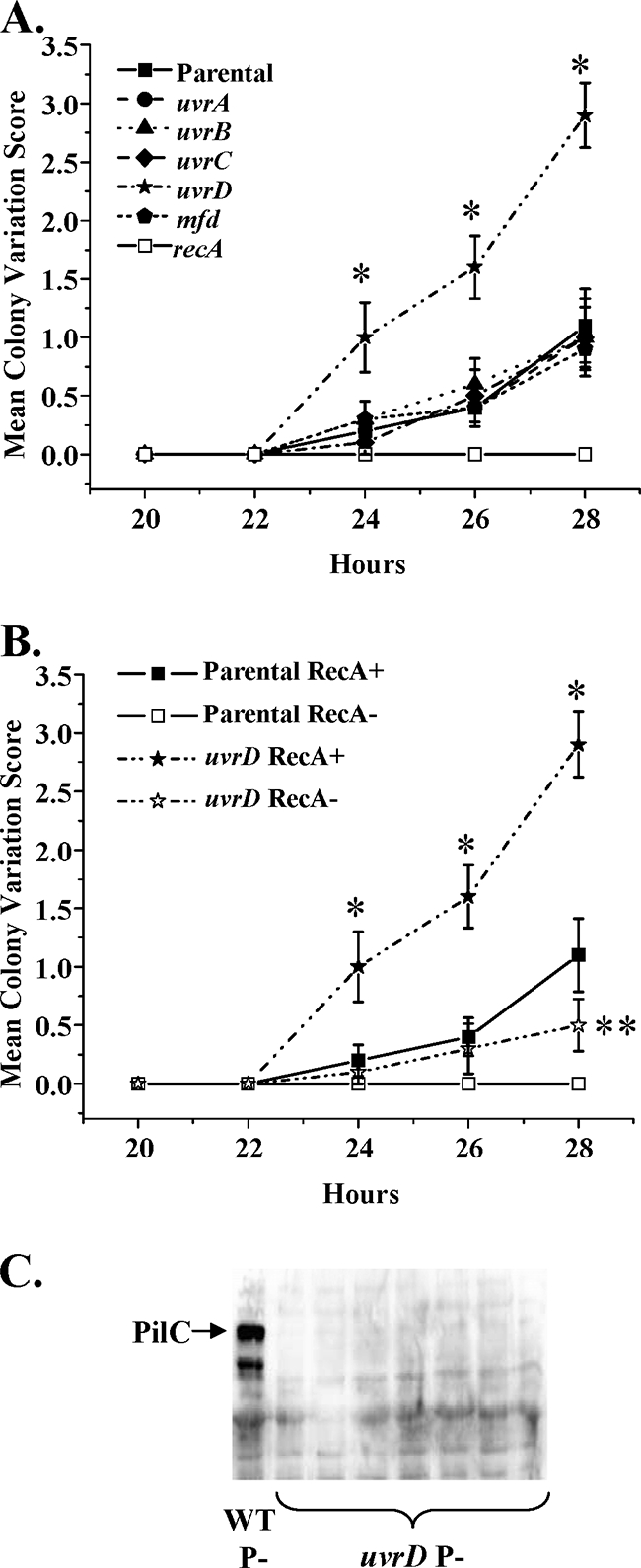FIG. 6.

uvrD inactivation leads to a higher frequency of PilC pilus-dependent phase variation events. (A) The parental strain FA1090 recA6 and isogenic mutants in uvrA, uvrB, uvrC, uvrD, and mfd were passaged on solid medium containing 1 mM IPTG to induce RecA expression. The appearance of P− outgrowths from 10 independent P+ colonies was measured from 20 to 28 h as reported by Sechman et al. (33). The mean PDCMC index ± the standard deviation from 10 independent colonies is reported from four experiments. Asterisks represent significant (P < 0.025 [Student two-tailed t test]) increases over the parental strain grown on IPTG at the indicated time points. FA1090 recA6 that were maintained on medium lacking IPTG, which are phenotypically RecA−, served as a negative control for PDCMC (recA). (B) The parental strain FA1090 recA6 and the isogenic uvrD mutant were passaged on solid medium containing 1 mM IPTG to induce RecA expression (+) or without IPTG to repress RecA expression (−). The mean PDCMC index is reported as in panel A. Asterisks represent significant (*, P < 0.025; **, P < 0.05 [Student two-tailed t test]) increases in PDCMC over the parental strain when maintained under the same growth conditions at the indicated time points. (C) FA1090 recA6 uvrD was grown on medium lacking IPTG, and lysates from seven P− CFU arising after passage were immunoblotted for PilC expression as described in Materials and Methods (lanes 2 to 8). A lysate from FA1090 Gc that is P− due to a pilin antigenic variation event (WT P−) served as a positive control for PilC expression (lane 1).
